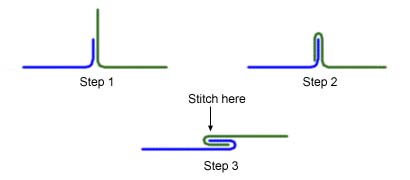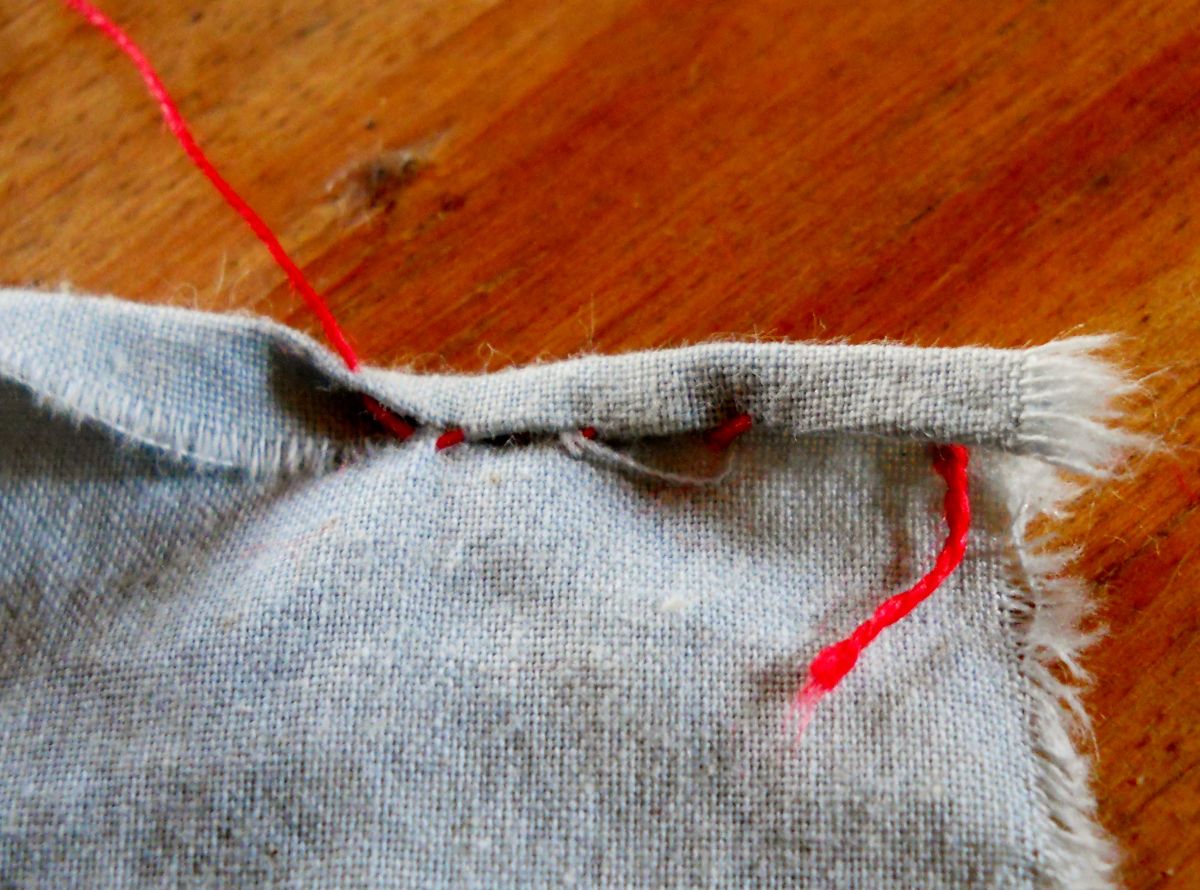So... after taking in the stays, I tried them on, and Voila!! It works! I have the correct fitting, and silhouette. I even have space between the bones in back where the lacing is! Woohoo!!
(no, I'm not showing you pictures of the stays on me... my chemise is rather see-through, so I'm keeping this G-rated!)
Undergarments, check. Time to make a mock-up of the dress bodice and check for fit. This actually took very little time (a couple of hours), compared to all the other things I've made thus far. I tried the mock-up on, and it fits almost perfectly. However, I had to make an adjustment in my chemise--it was too high up for the bodice to completely cover up. I was kind of surprised by that. But, upon reflection, I remembered that the front part of the bodice that I made goes underneath the bib front, which comes up higher on the neckline than the bodice front. Sooo... no wardrobe errors, here! To compensate for the slight gapping there, I shortened the shoulder pieces by 1/4", and shortened the front panels by 1/3". When I tied the front together, the front panels were overlapping, and thus, not short enough to close up that gap.
Hm. Thought I had a picture of it. Oh, well...
Part of the problem is that I bought those patterns just after Thanksgiving, and I've lost enough weight since then that my rings are looser, and I've gone down a size in my clothing, even my bra! I did a little shopping after school last Thursday, and was surprised that my usual size was too big. Feels kinda cool, actually. :) In my head, I'm much smaller, even though it doesn't show much in the mirror. So... mini happy dance!
Making a mock-up wasn't a waste of time, and those were very easy fixes. I was also worried about the sleeves--the back of the bodice is hexagonal (loosely), so the tops of the sleeves extend into the back, and having never made something like this, I had no idea how it would fit. So... I did sleeves in the mock-up as well. It's a good thing I did! To make the sleeves set in properly, you need to gather in about 80% of the sleeve, and then adjust it to fit the curves of the armscye (sewing term for armhole). I was a little confused as to how to spread the gathers out, so I ended up with gathers everywhere, instead of just in the shoulder area. So my first sleeve is wonky and puffy in the wrong places, and kinda hangs funny. The second sleeve, then, was better, as I knew where the shoulder was, and concentrated the gathers just in the shoulder area, using the rest of the gathers to slightly pull in (called "ease") the sleeve to fit the armscye where it is supposed to be flat. This sleeve hangs properly, and doesn't puff out in back, and is more comfortable.
 |
| Poorly fitted sleeve |
 |
| Properly fitted sleeve |
The second thing I found on the sleeve is that it was about 4 inches too long for my arms. I was doing a half-sleeve, ending around my elbows, but this length was more like 2/3 length. Technically, I'm a petite size on top (in terms of length--I have a short torso, and little T-Rex arms), so the sizing of most "normal" lengths is usually too long on me. I don't mind it in shirts, as I prefer them long (because I hate my belly), but it is usually a problem for more fitted garments, where the bust darts are in the wrong place, and sleeves are almost always too long for me. Thus, I shortened the sleeve length.
Surprisingly, cutting out the dress took a while. The skirt pattern is ginormous, and wouldn't fit on my kitchen table, so I was having to move it around and pin it to keep it from shifting the wrong way, and then discovered that my fabric width was two inches too short!!! At first, I was upset, but then my little problem-solving brain kicked in gear, and I realized I'll simply have to use slightly shallower pleats to compensate for the shorter width. No biggie. :)
 |
| Ready to sew!!! |
I was concerned with what I'd line the bodice with, as my muslin is white, and the fabric for the dress is cream-colored. But I cut my pieces out so well that I had plenty of leftover material, and was able to do a self-fabric lining. To make sure I didn't confuse the pieces (lining vs. print), I cut them upside-down and used the wrong side (unprinted) as the "right" side for the lining. It's a little confusing, in terms of how I'm describing it, but it worked out fine. Not that anybody will be seeing it, of course!
So yesterday, before taking Ella to the doctor, I had some time to sew, and I managed to complete the entire bodice as well as the bib front and ties...it helps that I'd made the mock-up the day before, so I knew all the steps and didn't need to refer to the instructions constantly. Now all I need to do is complete the skirt, figure out how much I will need to shorten the length (again, 5' 4" doesn't really meet "average" height), hem it, and do hand-stitching on a few parts.
 |
| Finished underlining. You can see how I made the lining of the bodice the wrong side of the dress fabric. |
The real question for me is...will I have time to do the spencer (jacket) and the hat? Hat, no big deal. Jacket? Possible big deal. We'll see how the weekend turns out! Oh--I remembered this morning that I still haven't made up a slip. But that's super-easy.
 |
| Finished bodice front (the upside-down part won't be seen) on my sewing table. |


My dress is not designed for wraparound ties...mine are supposed to tie in a bow in the back. I'd prefer wraparound, actually... my short arms don't reach comfortably behind my fat back, and the way I tie bows makes them go sideways or upside-down, and thus, look funky. I may be able to make them wrap around...we'll see how it works out.





































